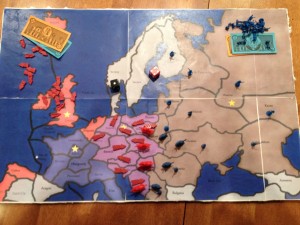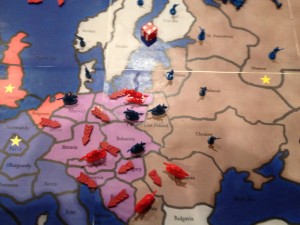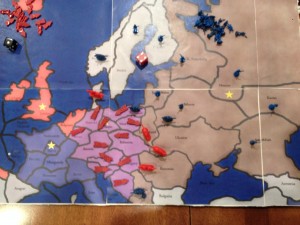Yesterday, I informally tested out the new combat rules with a 2 player game between Russia and France. Each player started with 11 territories, 4 generals, and 20 unit tokens.
Starting board position


The pieces to the top right and left of the board represent unit tokens.
Game after 3 rounds. Russia appears to be in trouble.
Game after 5 rounds. Russia now appears to be winning.

I continued the game for a few more turns, during which Russia gained even more territory. Afterwards, I ended the game as there was no hope for Germany.
The new combat rules appeared to add a significant amount of strategy to the game without adding excessive complexity. The uncertainty of combat due to the mechanic of bidding troop strength and the importance of positioning generals made thinking about each move important. Simply attacking with all your troops was not enough to maximize the chances of an optimal outcome. However, turns took significantly longer than I expected, which could be a problem if I want to make this game for more than 2 people. Also, I realized that the new combat rules meant that a two player game did not become too quickly one-sided with one player almost guaranteed to win. It seemed like Germany was “dominating” the game at the end of the third round because they had more troops and territory. However, Russia emerged as the clear winner by the end of 5th round.
